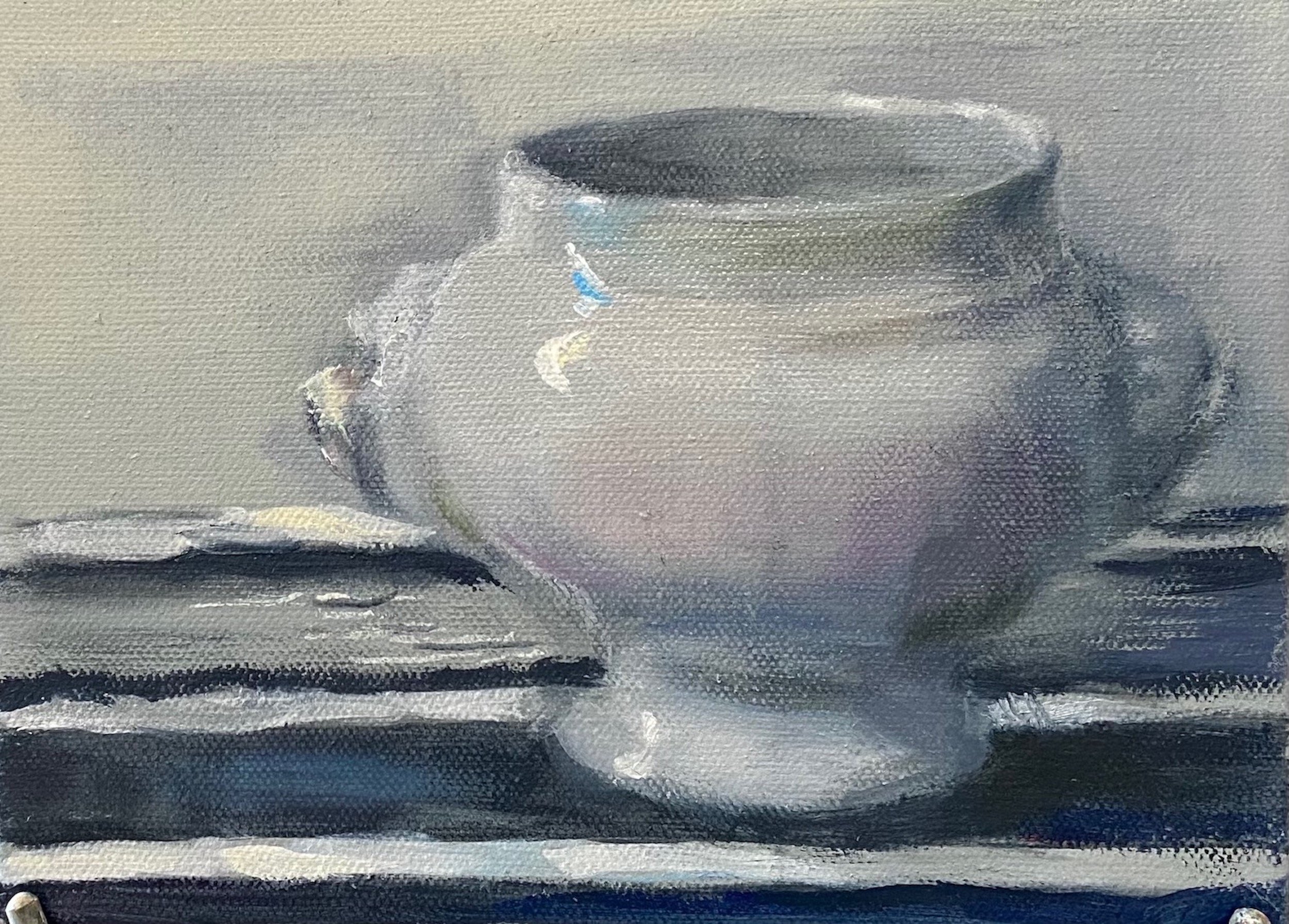Painting Cups
A New Yorker writer once described Tommy Tune, the tall song and dance man famous for his showmanship and big, fancy productions on Broadway, as "never having met a costume he didn't like." I feel that way about myself: I never met a cup I didn't like and didn't want to paint.
Pottery has been especially important to me these days, during the pandemic. We spend so much time at home. The objects we have at hand have a solemnity and prominence we didn't always give them when we rushed from home to the outside world. Now, we can savor and linger over that morning coffee and make a slow ritual of tea in the afternoon. Given how much I had come to appreciate these moments with cup in hand over the last several months, it seemed right to bring them into the painting studio and do their portraits.
This white French porcelain cafe au lait cup is my favorite way of drinking a latte in the morning. There is something wonderful about having to hold both sides of the bowl, with fingers around the lions' heads and face deep in the bowl. We have collected these bowls at local estate sales and at distant flea markets in our travels. All of our bowls have been preowned and preloved.
This object provokes so many memories. I will always remember the first time a waiter in a simple French cafe poured hot strong coffee from a pitcher in one hand while pouring hot milk from a smaller pitcher in his other hand; for me, into a bowl like this. Coffee never tasted so good. With a marvelous baquette and un oeuf sur le plat, I thought I had gone to heaven.
In the painting, my latte bowl sits on a favorite piece of antique French cloth.
There are some mornings when it feels just right to hold both a cup and a saucer. We found this mid-century cup in an antique store in Northeast Harbor, Maine. At first site, I loved the cup, its color and shape; but that it came from Maine -- a spot very close to my heart -- made it really special. The object was made by a potter in Blue Hill, Maine.
In the painting, the cup and saucer sit on a favorite tablecloth for picnics. The cloth brings a relaxed country mood to the modern object.
Talk about modern design. This is one of two mugs I brought back from a visit to the Heath Ceramics store in Sausalito, California. Health Ceramics was founded in 1948 by the ceramic artist and studio potter, Edith Heath. Although this particular mug was created after the business was taken over by others, it has all of the handcrafted beauty, functionality, and timeless style for which the company has always been known. I like to drink strong black tea in this mug, with just a touch of milk.
No special cloth here. The mug sits on a simple linen napkin, also purchased at Heath. As I set up the still life/portrait, the mug called for a very simple, minimalist background.
My Zen cup. This is one of a pair of cups purchased at a marvelous pottery in the Berkshires, known for its famous kiln and for the formal tea ceremonies it hosted. I am always enchanted by the glaze on these cups. The blue is startling, but so are the many greys. This is an especially good cup for Japanese tea and any other green tea.
No cloth at all here. The cup sits on a wooden cutting board. While working on this painting, I was also experimenting with an ochre background. I just couldn't resist the combination of yellow and blue.
This solidly crafted mug with its unusual handle was purchased at the Bennington Pottery in Bennington, Vermont. It is good for an afternoon latte, when I let myself do that, and for soups. It sits on a favorite piece of estate sale velour fabric in a strange greenish tone. The painting came to be about playing with different versions of white.
By the time I got to this cup, my still life objects had begun a revolt. They organized to tell me that they had had enough of being painted all alone, without any company. "Isn't it bad enough that so many people are feeling so alone in these pandemic days," they asked me, "why do we need to be alone, why can't we have company in your paintings of us." The Vermont cup had a particularly strong and grumpy way of putting this point, so I agreed to add a clear bottle to the set up. Early in the painting, I realized that the bottle had brought along its own friend, its shadow. Now we were three in the painting.




